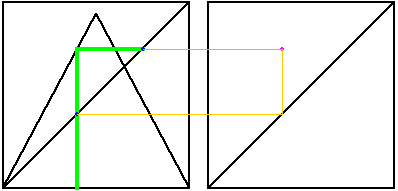
A return map plot of a sequence x0, x1, x2, x3, ... is a plot of the points
Here is an illustration of the return using graphical iteration. Here is an explanation of the parts of this diagram.
 |
| Click the picture for an animation. |
To illustrate the sorts of things we can learn from a return map, here are some time series (left) and return maps (right).
|
|||
 |
|||
| Here are the time series (left) and return map (right) of a
chaotic tent map. In general, if a sequence x1, x2, x3, ...
is generated by iterating a function, xi+1 = f(xi), the points
|
Return to Deterministic Chaos.